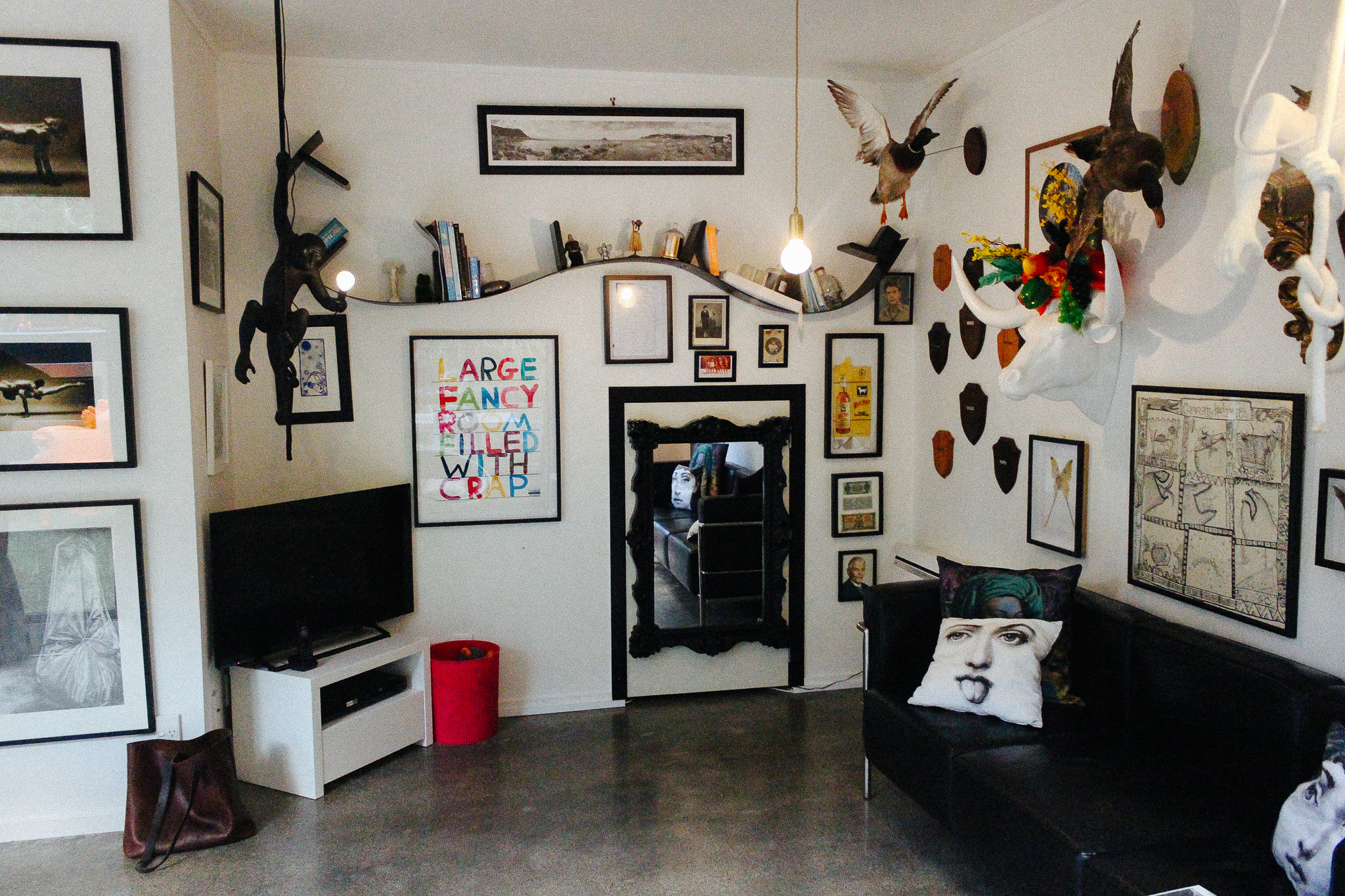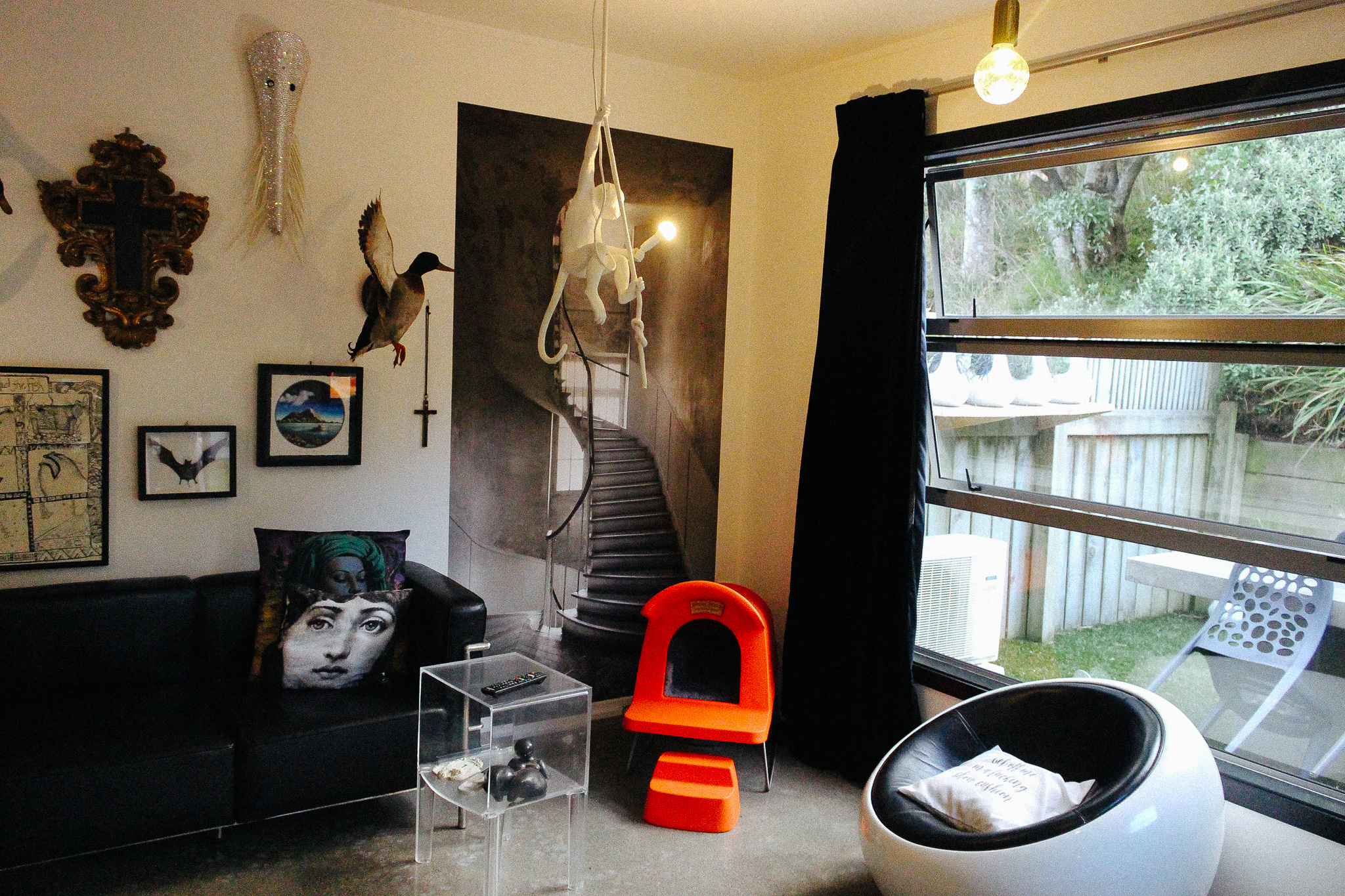Sue Bowerman is some kind of goddess or saint, depending on who you talk to – and, funnily enough, from when you enter her house, everything has the aura of some kind of relic of worship.
Her lounge is a transformative experience. The eyes can’t rest in anyone place. If The Selby were to shoot Wellingtonians, Sue would be high on his list. Despite this, she’s the most-plain talking, straight-shooting woman you’ll meet. “I always believe you should take people at face value” drawls Sue, pouring a glass of white wine out for me.
It isn’t just her house that is inspiring. Sue the woman is an inspiration for people in the city. Last year when I interviewed my 100th Resident, Thomas Lynch, Sues name came up (where he trained). It came up again when I interviewed the founder of Project Fashion Wellington, Kate Spencer. There was, evidently, something about Sue that touched lives.
If Jaye Glam is the Chief Operations Officer of Project Fashion, and Kate is the CEO, Sue sits as the quasi-independent board member/consultant of Project Fashion Wellington, aloof but with ultimate powers of influence to those working the ‘business as usual’ day-to-day running of the project. She’s funny, she’s elegant and holds just the right amount to edge to make you want to spend a whole night with her.
Changing lives
In the 80’s she started a school to help unemployed people learn new skills based in the creative arts, many of whom needed a second chance which Sue provided. “My school was for everyone, of all ages, no matter their background. It filled a gap where talented people fell on hard times, or were left out of the system. For some, it was inconceivable that a person who was educated or older needed to retrain. I was at an event where a PM once said ‘Why would someone in their 40’s still have a mortgage?’ But if you’ve been in the same job for 20 or 30 years and get made redundant, how the hell do you know how to write a CV? These people weren’t unqualified. Teachers, civil engineers, architects – but because they were older employers weren’t interested in them!”
Where did she come from?
Sue was born at Lower Hutt hospital and grew up in Wainuiomata. “My father worked at Civil Aviation (as it was then) and then he was at Foreign Affairs, and mum was a teacher. We lived in Rarotonga while I was at pre-school” says Sue. She had one sister. What was she like as a child? “Cunning” says Sue, lowering her report. “At Wainui College, I would be on daily report and I would take the letter to my mother out of the letterbox. I would then be very well behaved for a fortnight and show the second letter, saying how good I was, to my mum.”
Sue’s parents split when she was 13. “Wainuiomata then was quite accepting. When I was 18, I heard the word gay. It was the first time. I suddenly realized my best friends, one of whom borrowed my uniform, the other one who watched tap dancing with me, and my other friend who wore mascara, might have something a bit different – but we’d never called them gay. That’s just who they were.”
Prison Break
Sue left school and joined the Ministry of Transport as a Clark and became a Traffic Officer. “It became apparent half way through that they thought I was interviewing to be a Meter Maid” says Sue. “I was like ‘Nah, nah’”. Sue found herself out at the Army Barracks training to be a Traffic Cop. She was given a Beezer motorcycle which she had to crash start every morning. “I stayed at the Ministry of Transport for about 6 years” says Sue. “It was a good time. We had loads of fun.” Sue then left and went to work at Arahata Women’s Prison. “It was quite chilled and fairly relaxed actually” she explains. “The one time I got stressed was when ACDC were playing at Athlectic Park. I had arranged for a handful of well-behaved inmates to go. As soon as the van was parked they split, and left. I was panicking the whole concert. But they all came back, drunk and drugged up – but they were ALL there. I made them walk up and down the street to try and get them to pass as vaguely sober. It worked and I got them all back in.”
How did she start Bowerman School of Design?
After this escapade, Sue changed jobs to work at the then Labour Department. “They ran courses for unemployed people” says Sue. “I met the AMAAAZING Nancy Seaton. We thought we could do it better. So we applied for funding, got it – we started a creative course in costume design and screen-printing.” This evolved into the Wellington employment training centre - Bowerman School of Design opening in 1987, taking unemployed people referred by WINZ to teach them new creative skills through which they could find employment.
After the school closed when funding was withdrawn by the Ministry of Social Development, Sue changed focus to be a ‘life’ celebrant, doing both Weddings and Funerals. She also makes her own knitwear for dogs and works with Kate, her friend and a student of Bowerman School of Design, on Project Fashion Wellington. “Kate’s the student who never quite went away” laughs Sue. “Always annoying Sue” pipes in Kate, sitting to the side.
What is important for the future of Wellington?
I ask Sue how we will continue to support people being creative in Wellington in the future, and what she is most proud of, apart from her daughter Sarah. “Wellington is such an awesome city. It’s so vibrant and accepting, but we need to push the creativity more. I’m really proud of all the students who went through the school. It doesn’t matter whether it was a job at New World or designing for Kate Middleton. They all succeeded.”
Project Fashion Wellington is announcing its shows next week. Stay tuned for more information on www.theresidents.co.nz and www.instagram.co.nz/theresidents.nz.





















